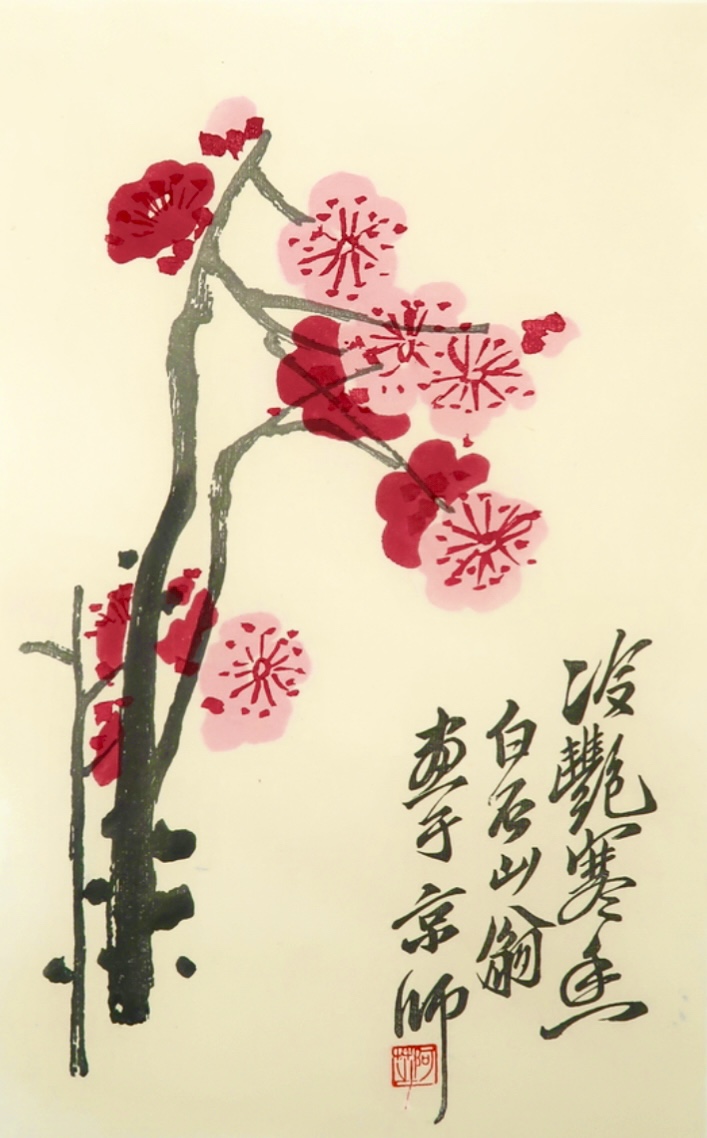The Other China
冷艷寒香
Lao Shu is the nom de plume of Liu Shuyong (劉樹勇, 1962-), a Beijing-based artist, writer, critic and professor in communications. His artistic voice is unique and personal, its tenor, whimsy and profundity evoke what for decades we have called ‘The Other China’ — a cultural noosphere that is as undeniably local as it is universal.
We first encountered Lao Shu in the virtual pages of China Heritage when introducing Making a Case for Humanity Over Banditry, a collection of essays on China’s forever crisis by Xu Zhangrun 許章潤, in July 2019. The inscription on the Lao Shu painting that we selected on that occasion read:
As autumn winds rustle amber leaves I lock myself away to read while others busy themselves in the world. In the fall all flowers lose their petals.
秋風漸漸涼,木業次第黃。閉門讀閒書,任人到處忙。深秋繁花落去。
Again, we chose a painting by Lao Shu to mark 1 July 2020, the day that Hong Kong decisively fell to Beijing (see ‘Thoughts on 1 July 2020’), and he helped us commemorate Dai Qing 戴晴 at eighty on 1 October 2021. We featured his work in The Whimsy and Wisdom of Lao Shu, in a summer of discontent (12 August 2022) and again when we celebrated the Lunar New Year of the Rabbit (see Now What? — Greeting the Guimao Year of the Rabbit 癸卯兔年 and Rabbiting on with Lao Shu). Here, we mark the northern spring of 2023 in the salubrious if wistful company of Lao Shu.
For more of Lao Shu’s work, see 老樹畫畫 on Weibo, the account from which the following works are taken.
***
In the inscription on the first painting Lao Shu quotes a line from the German artist Anselm Kiefer:
I am not nostalgic, I want to remember.
It is part of a response to a question posed to Kiefer by an interviewer in 1987.
Q: Can you say something more about your attitude to the Jews, who were the theme of a number of your works? How can that be a joyous theme for a German?
A: My answer has to say something about Germany. After World War II Germany touched the zero hour. Its myth of itself was bankrupt, it no longer really existed. Since then, Germany has become more self-reliant and cosmopolitan than it ever was. The Jews, through their history, were forced to become cosmopolitan. They are a lesson for the Germans. They are cosmopolitan in their relation to art. For example, most collectors are Jewish. My art seems to reach them. When I went to Jerusalem, I was a great success. This had much to do with the new cosmopolitan Germany.
Q: But many people think you are nostalgic for the old, xenophobic, mythical Germany.
A: I am not nostalgic. I want to remember.
In response to the question ‘Is the artist, then, for you, “a thinker”?’ in the same interview Kiefer said:
There are three dimensions to an artist: will, time and space. In the United States the artist is thought of as an object-maker. Art is not an object. Art is a way of receiving. And it is full of archaeological potential.
***
This chapter in The Other China is also recorded in New Sinology Jottings.
— Geremie R. Barmé
Editor, China Heritage
20 March 2023
The Twenty-ninth Day of
The Second Month of the
Guimao Year of the Rabbit
Spring 2023, Eight Moments
in paint, poetry and prose
Translations of Lao Shu and Qi Baishi by Geremie R. Barmé
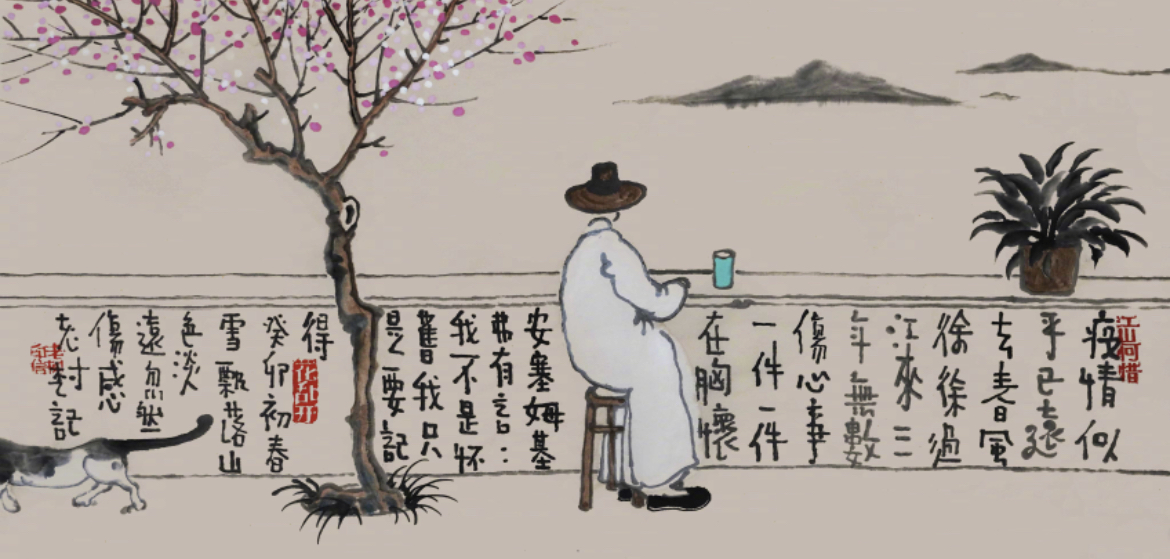
***
Eddies of spring wind reach tentatively over the water,
It is as though they hasten the virus further on its way.
Even yet, that multitude of sorrows three years’ deep
fills my heart, each memory still a distinct presence.
— Anselm Kiefer put it this way:
‘I am not nostalgic, I want to remember.’
Painted by Lao Shu after a fall of snow on distant hills triggered
a melancholic mood. Early spring, Guimao Year of the Rabbit
[Published on 14 February 2023.]
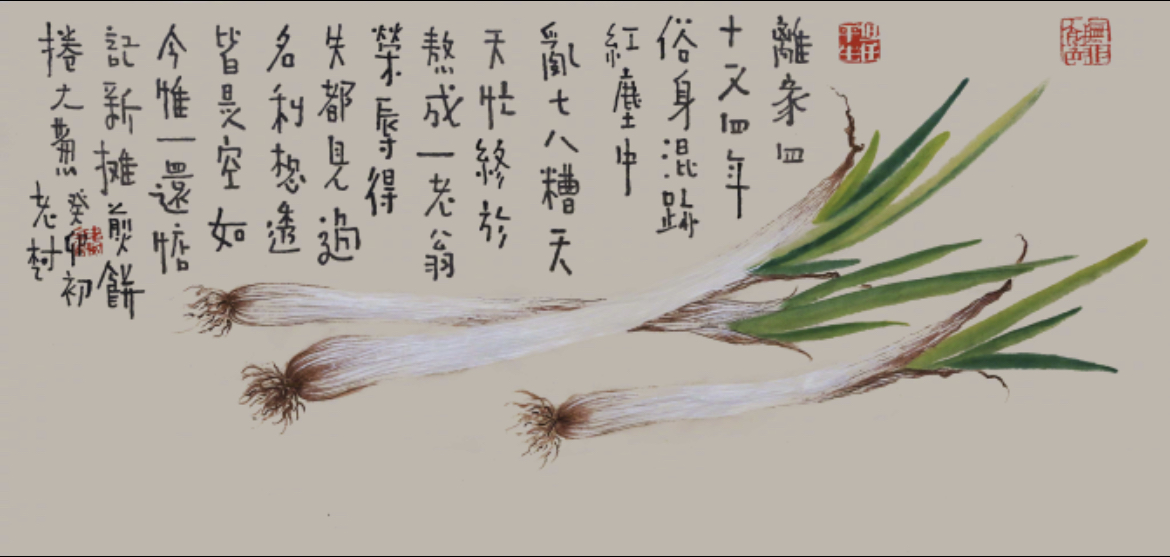
***
Forty-four years it’s been since leaving home and I’m caked in the red dust of the world.
Day in day and day out I’ve busied myself with this and that. I made it through, now a codger.
I’ve seen it all: glory and infamy, achievement and loss. Fame and fortune are all empty.
One thing, however, hovers in my longing thoughts: spring onions rolled up in a fresh jianbing.
Lao Shu, early on in the Guimao Year of the Rabbit
[Published on 16 February 2023.]
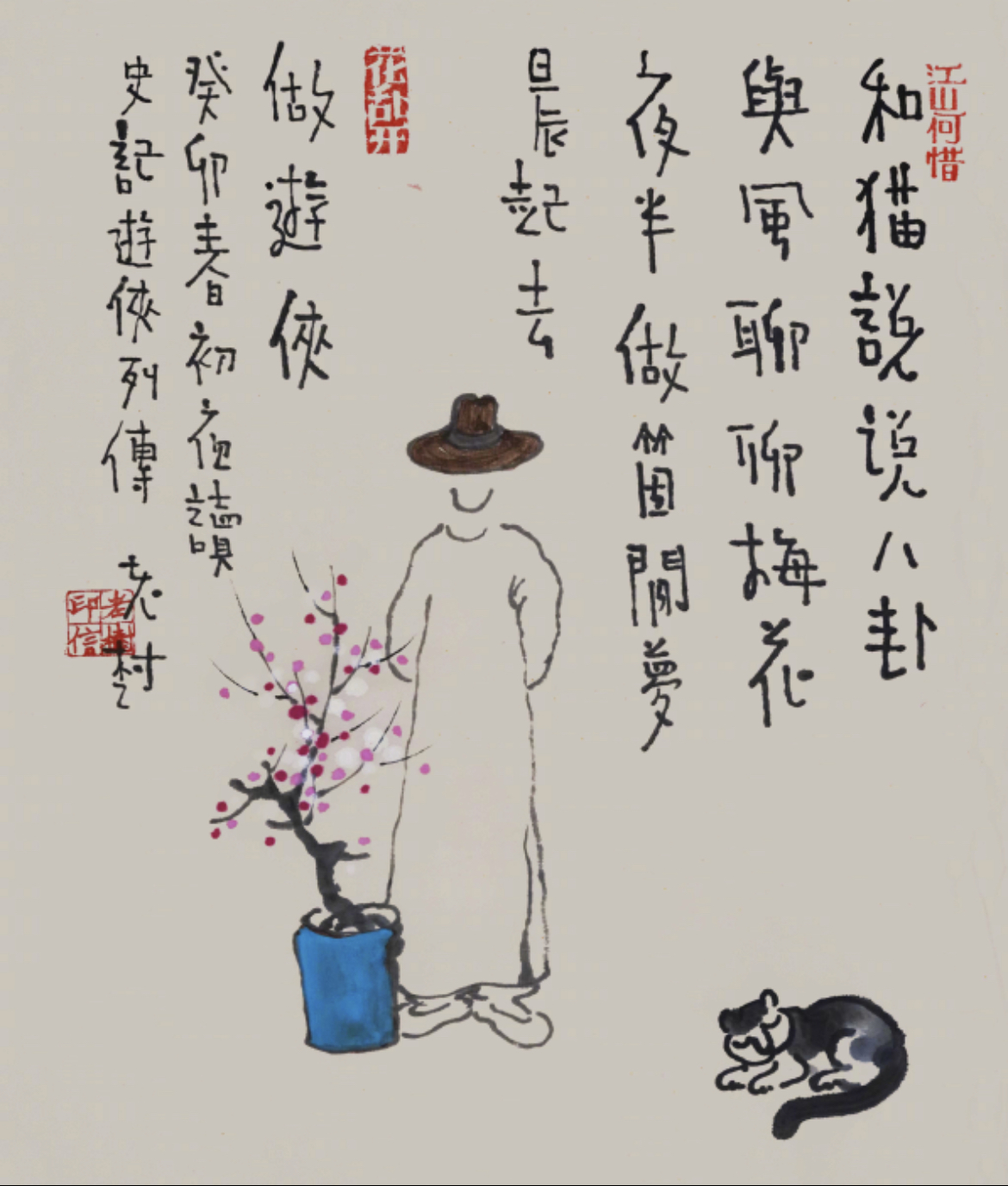
***
I lectured my cat on the Eight Trigrams, and
Talked to the wind about cherry blossoms.
In the early hours, I had a random dream:
Come morning, a knight-errant’s adventures were waiting.
— Lao Shu, after reading ‘Biographies of Knights-errant’
in Records of the Grand Historian before going to bed
[Published on 17 February 2023.]
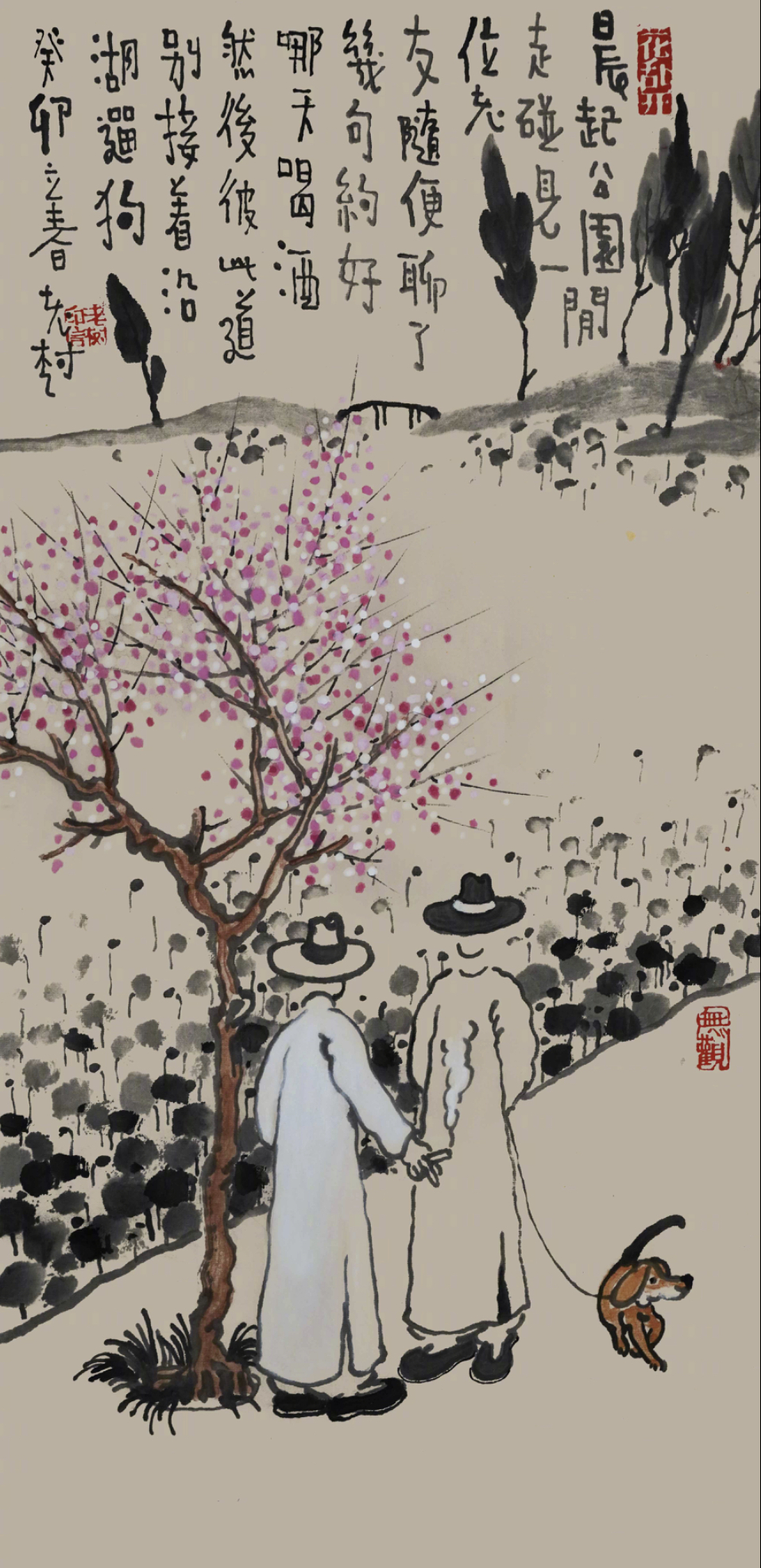
***
Woke early and took a stroll in the park
Where I bumped into an old buddy
We chatted away for a while and
Agreed to catch up some time for a drink
Having said our goodbyes
He continued on around the lake
With his dog
During The Start of Spring 立春,
Guimao Year of the Rabbit. Lao Shu
[Published on 19 February 2023.]
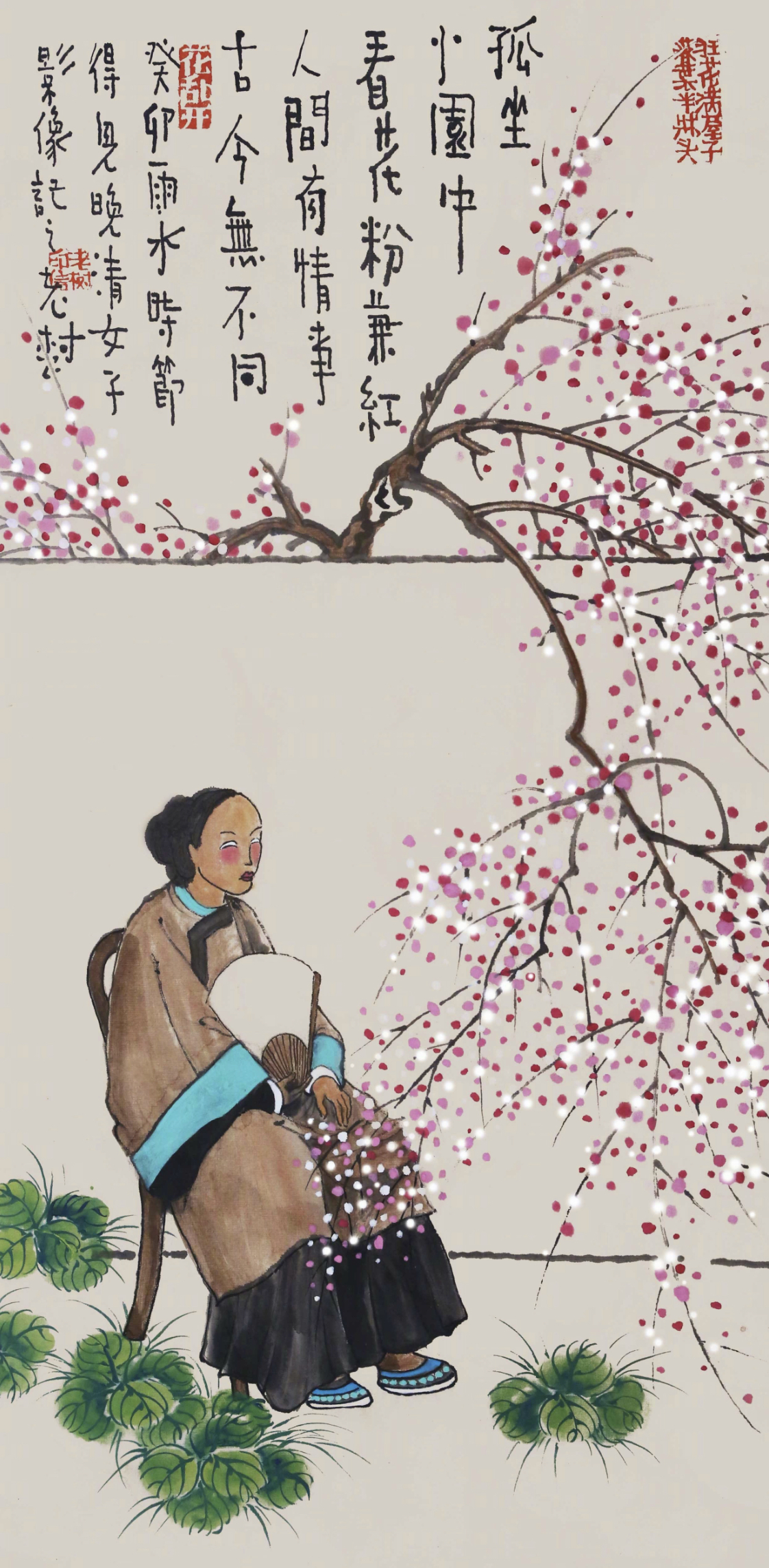
***
A solitary figure in a garden looking at spring blossoms in pink and scarlet hue:
The variegated sentiments of the human realm, today and forever the same.
Recorded after seeing a photograph of a lady of the
late-Qing dynasty during The Rains of the
Guimao Year of the Rabbit. Lao Shu
[Published on 1 March 2023.]
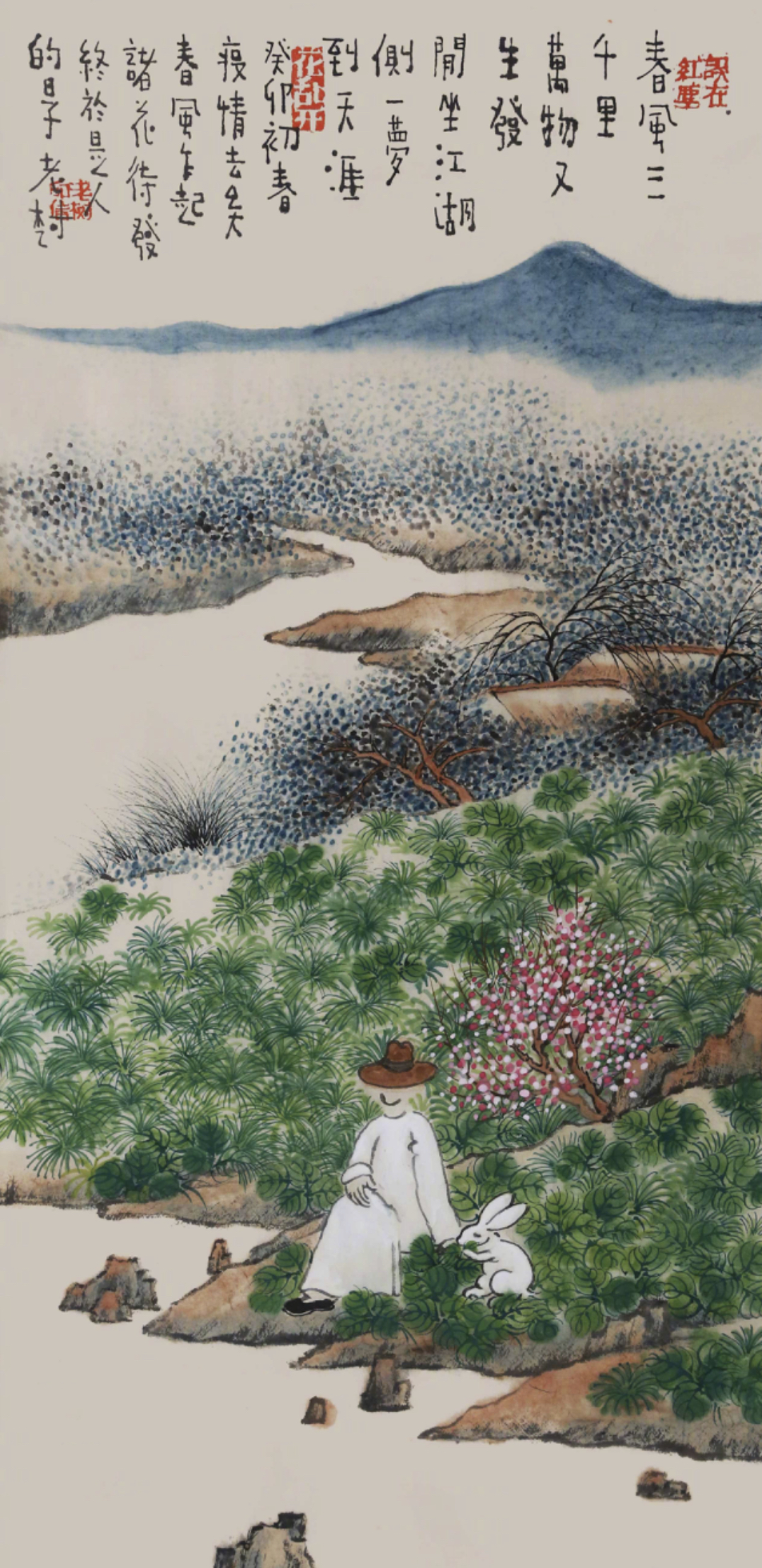
***
Spring winds course over the land
the bountiful world is reborn.
Lazing by the swelling waters
fancy carries me to heaven’s edge.
Early spring, Guimao Year of the Rabbit. The virus has departed and
suddenly the spring wind bestirs itself and blossoms burst to be free.
— It’s humanity’s turn again. Lao Shu
[Published on 7 March 2023.]
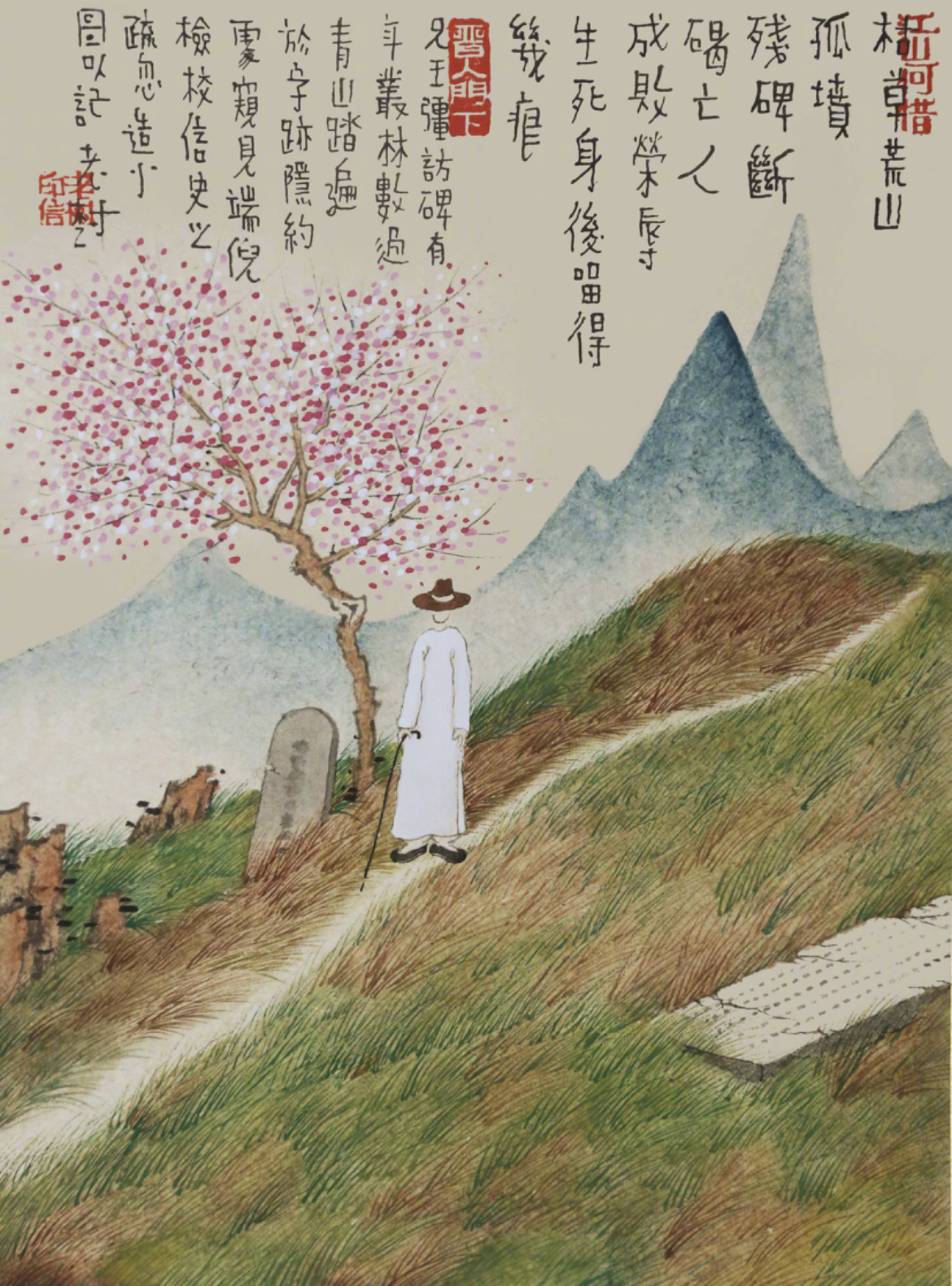
***
What remains once we quit the scene? —
A solitary grave, tufts of dried grass on a barren hillock
A tumble-down headstone, a worn inscription for the dead
All that was achieved, and what was not, all the glories and all the insults
Now but a part of the cavalcade of Life and Death
It has been years since visiting Brother Wang Qiang’s tomb.
Forged a way through overgrown woods, trampling over the hills,
To glimpse some faded words and add a detail to a lapsed history.
This painting is my modest record. Lao Shu
[Published on 16 March 2023.]
Qi Baishi’s Early Spring
齊白石
An indifferent beauty,
a penetrating fragrance.
Painted in Beijing by Baishi,
an old man of the mountains
